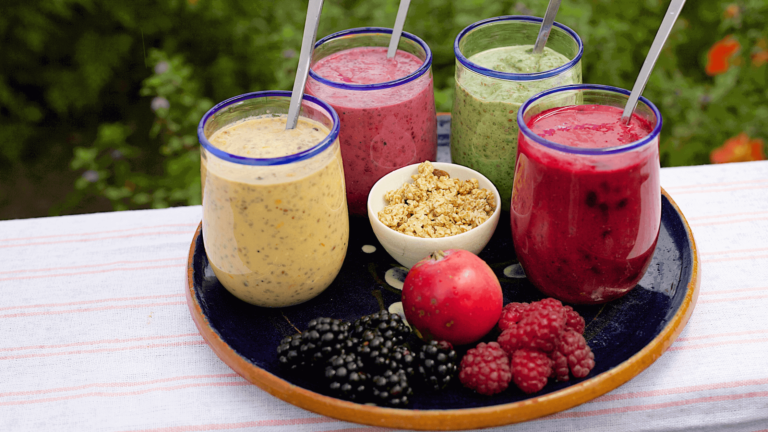Savor the Flavors: cooked vs raw vegetables? the Ways to Enjoy 9 Nutritious Veggies

Many people believe that consuming raw vegetables guarantees maximum nutritional benefits. However, the truth is that certain vegetables offer greater nutrient availability when cooked. In this article, we will explore the most effective cooking methods for nine vegetables to unlock their full nutritional potential. From beets to tomatoes, discover how to optimize your intake of essential nutrients from cooked vs raw vegetables.
cooked vs raw vegetables
In this article, we’ll delve into the nutritional merits of 13 diverse vegetables, exploring the impact of cooking methods on their nutrient profiles, and ultimately uncovering the best ways to harness their full nutritional potential
1. Beets: Unlocking the Potential with Cooking
Beets are best enjoyed cooked rather than raw due to their numerous health benefits. These vibrant vegetables are low in calories and packed with nutrients that can reduce the risk of heart disease and stroke. Cooking beets helps release naturally occurring compounds that promote healthy blood flow, lower LDL cholesterol, and provide a substantial amount of fiber.
Additionally, studies have shown that drinking beet juice before exercise enhances endurance. To prevent messy juice splatters, it’s recommended to wear gloves and an apron while cooking beets. Covering the cutting board with parchment paper before slicing can also be helpful.
2. Carrots: A Duo of Raw and Cooked Nutritional Delights :
Carrots offer health benefits whether consumed raw or cooked. Raw carrots are rich in fiber, aiding in lowering blood pressure and cholesterol levels. Cooked carrots, on the other hand, release carotenoids, which convert to vitamin A and support immune system health. To retain their nutrient content, steaming carrots is the best cooking method as it minimizes cooking time while maximizing nutrient retention.
3. Cauliflower: Harnessing Cancer-Fighting Compounds
Both raw and cooked cauliflower contribute to a healthy diet. Cauliflower contains cancer-fighting compounds that are released when chopped, but some individuals may experience indigestion with raw cauliflower. Steaming solves this issue. This versatile vegetable is high in vitamins C and K, and it provides a good amount of folate, which aids in the formation of red blood cells and helps lower blood pressure. Steaming cauliflower ensures the preservation of its nutrients and flavor.
4. Green Salad: A Nutrient-Rich Raw Delight
Raw salad greens are a treasure trove of vitamins and nutrients. Adding oil-based dressing not only enhances the taste but also promotes the absorption of essential vitamins and minerals. Studies have shown that doubling the amount of salad dressing leads to double nutrient absorption. However, it’s essential to avoid excessive dressing usage. Following the U.S. dietary guidelines and consuming approximately two tablespoons of salad oil per day is a reasonable approach.
5. Kale: Raw for Immunity, Cooked for Cholesterol
Kale, a nutritional powerhouse, can be consumed both raw and cooked. Raw kale provides a rich source of vitamin C, supporting a robust immune system. Steamed kale aids in lowering cholesterol levels. This leafy green vegetable is low in calories and rich in vitamins, minerals, calcium, and potassium. Roasted kale chips, sprinkled with olive oil and sea salt, retain their nutritional value while providing a tasty snack. Steaming kale and adding a squeeze of lemon juice and a pinch of salt make for a delightful side dish.
6. Mushrooms: Unleashing the Benefits through Cooking
Cooked mushrooms offer the most health benefits compared to their raw counterparts. Mushrooms are a rich source of B vitamins, which aid in energy conversion. To preserve their nutritional value, it is important to avoid boiling or microwaving mushrooms, as they may lose some of their nutritional content. Sautéing or cooking mushrooms on low heat is ideal.
7. Spinach: Cooked for Calcium and Iron Boost
Cooking spinach allows for the availability of its rich calcium and iron content. This leafy green vegetable is a nutrient powerhouse, boosting the immune system and promoting healthy bones. Blanching spinach in boiling water for a minute, followed by an ice water bath, preserves its nutritional content. Store the blanched spinach in the fridge for future use in salads, smoothies, or soups.
8. Sweet Potatoes: The Benefits of Boiling
Boiled sweet potatoes offer the highest nutrient absorption compared to other cooking methods. Rich in beta carotene, sweet potatoes are an excellent source of vitamin A, promoting healthy vision. These versatile tubers also assist in controlling blood pressure due to their vitamin content. Scrubbing the skin thoroughly allows for safe consumption, as it may contain microbes from the soil.
9. Tomatoes: Raw and Cooked, a Dual Benefit
Tomatoes provide health benefits when consumed both raw and cooked. Raw tomatoes supply vitamin C for a strong immune system, while cooked tomatoes help protect against heart disease. Lycopene, the nutrient responsible for the tomato’s vibrant color, aids in lowering blood pressure and offers protection against prostate cancer. Processed tomato products, such as tomato juice or canned tomatoes, contain even higher levels of lycopene compared to fresh tomatoes.
10. Broccoli: Supercharging Health Benefits
Raw or Cooked? Both. Broccoli offers unique benefits in both raw and cooked forms.
Benefits: Broccoli is a nutritional powerhouse, packed with vitamins, minerals, and disease-fighting compounds. Raw broccoli contains high levels of vitamin C, which boosts the immune system and promotes collagen production for healthy skin.
On the other hand, cooking broccoli enhances its antioxidant content and makes certain nutrients, such as sulforaphane, more available to the body. Sulforaphane is known for its cancer-fighting properties and helps support detoxification processes in the body.
Tip: To maximize the nutritional benefits, lightly steam or stir-fry broccoli to preserve its texture and taste while unlocking its health-boosting compounds.
Including broccoli in the article would provide valuable information about this popular vegetable and cover a wider range of nutritious options.
11. Bell Peppers: Colorful and Nutrient-Rich
Raw or Cooked? Both. Bell peppers offer unique benefits in both raw and cooked forms.
Benefits: Bell peppers come in a variety of vibrant colors and are rich in vitamins A, C, and E, as well as antioxidants. Raw bell peppers provide a crunchy texture and are an excellent source of vitamin C, which supports the immune system and aids in collagen production. On the other hand, cooking bell peppers can enhance their natural sweetness and make certain nutrients, such as lycopene, more bioavailable. Lycopene is associated with a reduced risk of certain cancers and promotes heart health.
Tip: Enjoy bell peppers raw in salads or as crunchy snacks, or sauté, roast, or grill them to enhance their flavors and maximize the release of beneficial compounds.
Adding information about bell peppers will provide readers with a broader range of vegetable options and enhance the overall depth and variety of the article.
12. Zucchini: Versatile and Nutrient-Rich
Cooked vs raw vegetables (Zucchini) Both. Zucchini offers nutritional benefits, whether consumed raw or cooked.
Benefits: Zucchini is a versatile vegetable that is low in calories and rich in fiber, vitamins A and C, potassium, and antioxidants. Raw zucchini provides a refreshing crunch and retains its full nutrient profile. On the other hand, cooking zucchini can enhance its flavor and make certain nutrients more easily absorbed by the body. Grilling, sautéing, or roasting zucchini can bring out its natural sweetness and create delicious dishes.
Tip: When consuming raw zucchini, consider using a spiralizer to create zucchini noodles or adding it to salads for a fresh and nutritious twist. When cooking, aim for minimal cooking time to preserve its nutritional value.
Including zucchini in the article expands the range of vegetables covered and provides readers with insights into maximizing the nutritional benefits of this versatile ingredient.
Note: This article is for informational purposes only. Please consult a healthcare professional or nutritionist for personalized advice and recommendations.
Conclusion: Preserving Flavor, Texture, and Nutrients
To fully enjoy the flavor, texture, and nutritional value of vegetables, it’s best to cook them after preparing other meal components. This approach ensures that vegetables retain their freshness and nutrients. Whether you’re steaming, boiling, sautéing, or roasting, choosing the appropriate cooking method can unlock the full potential of vegetables and contribute to a healthy, well-rounded diet.
Cooked vs raw vegetables Sources:







One Comment